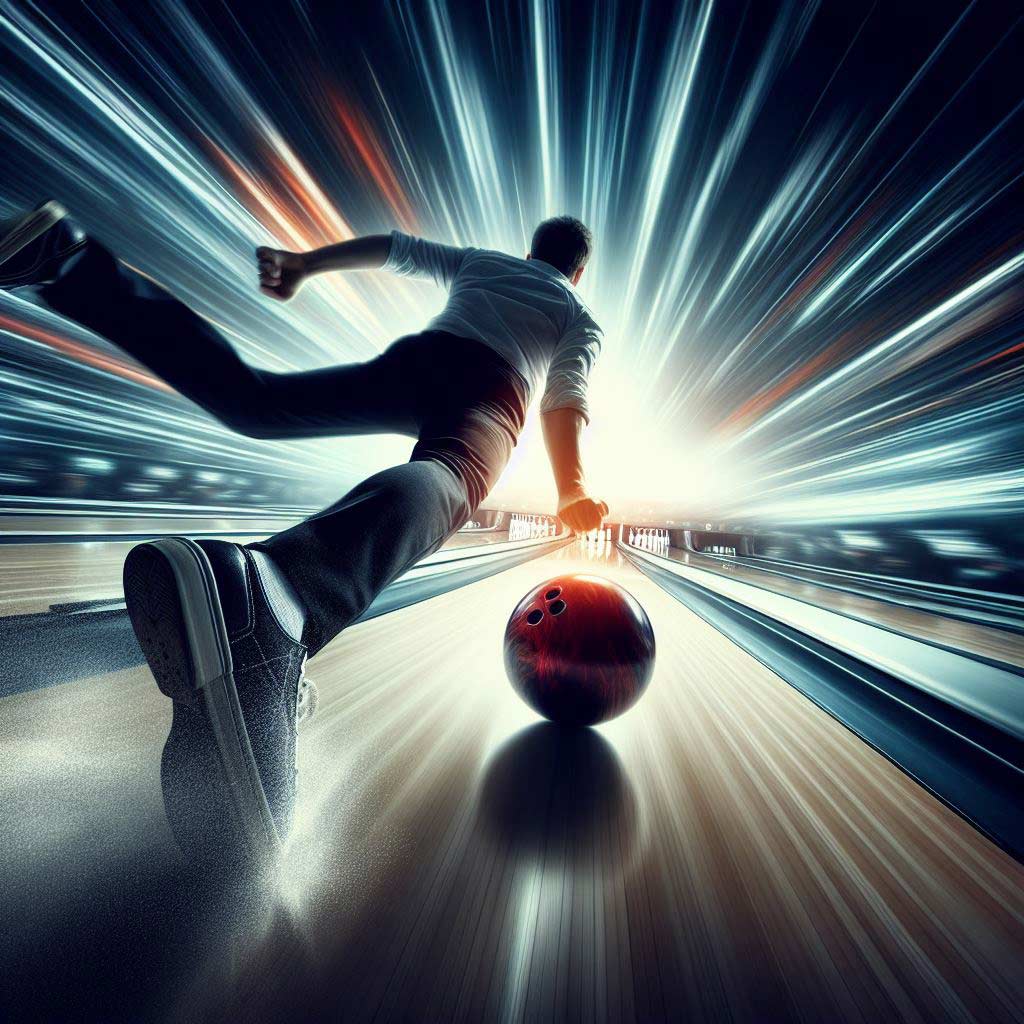If you’re new to the world of candle pin bowling, selecting the right ball can seem like a daunting task. Unlike traditional 10-pin bowling, candle pin balls have a distinct design and require a different approach when it comes to choosing the perfect fit.
In this ultimate guide, we’ll cover all the key factors you need to consider to find the ideal candle pin bowling ball for your skill level and playing style.
From understanding ball basics to evaluating materials and sizing, you’ll walk away with the knowledge to make an informed purchase and take your candle pin game to the next level.
Understanding Candle Pin Bowling Ball Basics
To start, let’s dive into the fundamentals of candle pin bowling balls. The most significant difference between candle pin and standard 10-pin balls is the shape.
Candle pin balls have a rounded, tapered design that’s narrower and taller than a typical bowling ball. This unique shape is meant to better accommodate the thin, elongated candle pins used in this variant of the sport.
Candle pin balls also tend to be much lighter than their 10-pin counterparts. Typical candle pin ball weights range from 2 to 4 pounds, compared to the 10-16 pound balls used in standard bowling. This lighter weight helps players generate the necessary momentum and power to knock down the tall, slender pins.
Another key difference is the ball’s diameter. Candle pin balls usually measure between 4.75 and 5 inches in diameter, significantly smaller than the 8.5-inch balls used in 10-pin bowling. This compact size allows for greater control and maneuverability on the narrow candle pin lanes.
Determining Your Skill Level and Needs
Before you start shopping for a candle pin bowling ball, it’s important to assess your current skill level and playing style. This will help you identify the specific ball features and characteristics that will work best for your game.
Beginner candle pin bowlers will want to focus on finding a ball that’s easy to grip, roll, and control. More experienced players may prioritize factors like hook potential, durability, and customization options to take their performance to the next level.
Ask yourself the following questions to help determine your needs:
- How long have you been playing candle pin bowling? Are you a beginner, intermediate, or advanced player?
- What are your key strengths and weaknesses on the lanes? Do you need help with power, accuracy, ball control, etc.?
- Do you prefer a straight roll or do you want to be able to put hook on the ball?
- How much do you weigh, and what is your overall physical build and strength level?
- Are you looking for a versatile, all-purpose ball or a specialized piece of equipment?
Answering these questions will guide you towards the right ball features and specifications to maximize your candle pin bowling experience.
Choosing the Right Ball Weight
One of the most important factors in selecting a candle pin bowling ball is the weight. As mentioned earlier, these balls tend to be significantly lighter than standard 10-pin balls. But how do you determine the ideal weight for your needs?
Generally, the recommended ball weight for candle pin bowling is 2-4 pounds. However, the specific weight that’s right for you will depend on a few key considerations:
Your Strength and Physical Build
Heavier balls require more physical strength to control and deliver effectively. Taller, stronger players may be able to comfortably handle a 4-pound ball, while smaller or less experienced bowlers may struggle with anything over 3 pounds.
Pay attention to how the ball feels in your hand. If it’s too heavy and difficult to swing, you’ll likely experience poor accuracy and reduced pin carry. Start on the lighter end of the spectrum and gradually work your way up as your strength and technique improve.
Your Preferred Bowling Style
The weight of your candle pin ball can also impact your playing style. Heavier balls tend to have more momentum and power, making them well-suited for a straight, powerful roll. Lighter balls, on the other hand, offer more control and maneuverability, which can be beneficial for players who want to put hook on the ball.
Consider how you typically release the ball and what type of shots you want to be able to execute. This will help you zero in on the right weight range.
Your Height and Arm Strength
In general, taller bowlers with longer arms and greater physical strength can handle heavier balls more effectively. Shorter players or those with less upper body power may want to opt for a lighter 2-3 pound ball.
To find your sweet spot, experiment with different weights during your practice sessions. Pay close attention to how the ball feels in your hand, how much power you can generate, and the overall control and accuracy you’re able to achieve. This hands-on testing will be crucial in determining the ideal weight for your candle pin bowling needs.
Selecting the Appropriate Ball Size
In addition to weight, the size of your candle pin bowling ball is another important consideration. As we mentioned earlier, these balls are significantly more compact than standard 10-pin balls, measuring between 4.75 and 5 inches in diameter.
The right ball size will come down to the dimensions of your hand and fingers. A ball that’s too large will feel awkward and difficult to grip, while one that’s too small may slip out of your hand during release.
Here’s how to properly measure and select the right candle pin ball size:
- Measure your hand. With your fingers together and your hand flat, measure the span from the tip of your thumb to the tip of your middle finger. This will give you your hand diameter.
- Measure your fingers. Use a ruler to measure the length of your middle finger from the first knuckle to the tip. This is your finger length.
- Compare your measurements to standard candle pin ball sizes. Most balls range from 4.75 to 5 inches in diameter, with finger holes drilled to accommodate different finger lengths.
- Try out different ball sizes in person. Before making a purchase, visit your local candle pin bowling alley and test out a few options to see which one feels the most comfortable and secure in your hand.
Keep in mind that a properly fitted ball should allow you to comfortably insert your fingers up to the second knuckle without feeling too tight or loose. Avoid balls that require you to force your fingers in or leave excessive space, as this can lead to inconsistent releases and reduced control.
Evaluating Ball Materials and Coverstock
Another key factor in choosing the perfect candle pin bowling ball is the material and coverstock. These elements can have a significant impact on the ball’s performance, so it’s important to understand the differences and select the right combination for your needs.
Common Candle Pin Ball Materials
- Polyester: Polyester is one of the most popular and widely used materials for candle pin bowling balls. These balls are known for their durability, consistency, and relatively low cost. However, polyester balls typically offer less hook potential than other materials.
- Urethane: Urethane balls provide a bit more hook and overall ball motion compared to polyester. They also tend to be more expensive but can be a great option for advanced players who want increased control and hook capabilities.
- Resin: Resin is a newer material that’s becoming more prevalent in the candle pin bowling world. Resin balls offer enhanced hooking action and backend motion, making them a popular choice for players who want to put more spin on the ball. They do come at a higher price point, though.
Choosing the Right Coverstock
In addition to the base material, the ball’s coverstock can also influence its performance. The three main coverstock options for candle pin balls are:
- Shiny: Shiny coverstock provides a glossy, reflective finish that promotes a smoother, more predictable ball motion. This can be a good choice for beginners or players looking for a versatile, all-purpose ball.
- Matte: Matte coverstocks have a duller, more textured appearance that helps generate more hook and backend revolutions. This can be beneficial for experienced bowlers who want enhanced ball reaction off the pins.
- Pearl: Pearl coverstocks sit somewhere in the middle, offering a balance of hook potential and overall ball motion. They can be a great compromise for players who want a bit more hook than a shiny ball without the full aggression of a matte cover.
When evaluating coverstock options, consider your current skill level, preferred bowling style, and the specific lane conditions you’ll be playing on.
Shiny balls may be the safest bet for beginners, while more advanced players may want to experiment with matte or pearl coverstocks to unlock enhanced hooking action.
Other Important Considerations
While the weight, size, material, and coverstock of your candle pin bowling ball are the primary factors to focus on, there are a few other important details to keep in mind as well:
Balance Hole Placement
The balance hole is a small, additional hole drilled into the ball to help it roll more smoothly and minimize any unwanted movement or wobble. The placement of this hole can impact the ball’s overall motion and performance.
For a straighter, more controlled roll, the balance hole is typically placed closer to the thumb hole. For increased hook potential, it may be positioned farther away. Work with your pro shop to determine the ideal balance hole placement for your playing style.
Ball Maintenance and Care
Proper maintenance is key to keeping your candle pin bowling ball in top shape. This includes regularly cleaning the surface, conditioning the coverstock, and addressing any cracks or chips that may develop over time.
Consult with the pros at your local bowling alley or pro shop to learn the best practices for caring for your specific ball type and material. Proper maintenance will help maximize the ball’s lifespan and ensure consistent performance on the lanes.
Where to Purchase Quality Equipment
When it comes to buying a candle pin bowling ball, your best bet is to visit a reputable pro shop or specialty retailer. These establishments will have a wide selection of quality balls and the knowledgeable staff to help you find the perfect fit.
Avoid purchasing balls online or from big box stores, as you won’t have the opportunity to physically test different options and get expert guidance on the right ball for your needs. The investment in a quality candle pin ball from a trusted source will pay off in the long run with improved performance and durability.
Conclusion
Choosing the perfect candle pin bowling ball requires careful consideration of several key factors, including weight, size, material, and coverstock. By understanding the unique characteristics of these specialized balls and assessing your own skill level and playing style, you can find the ideal piece of equipment to take your game to new heights.
Remember to start with the basics – determine your ideal ball weight and size, then evaluate material and coverstock options that align with your strengths and preferences. Don’t be afraid to experiment and test out different balls until you find the one that feels just right.
With the right candle pin bowling ball in hand, you’ll be on your way to knocking down more pins, improving your consistency, and having even more fun on the lanes. So what are you waiting for? Get out there and find your perfect match!





